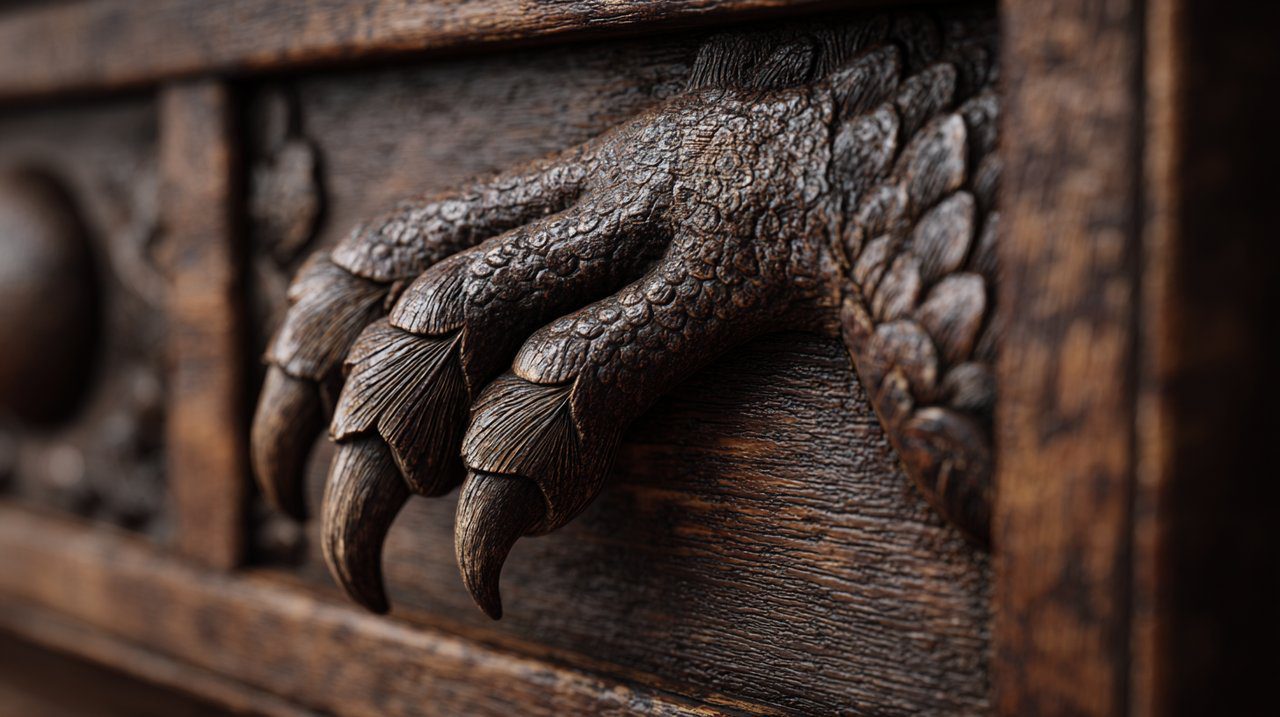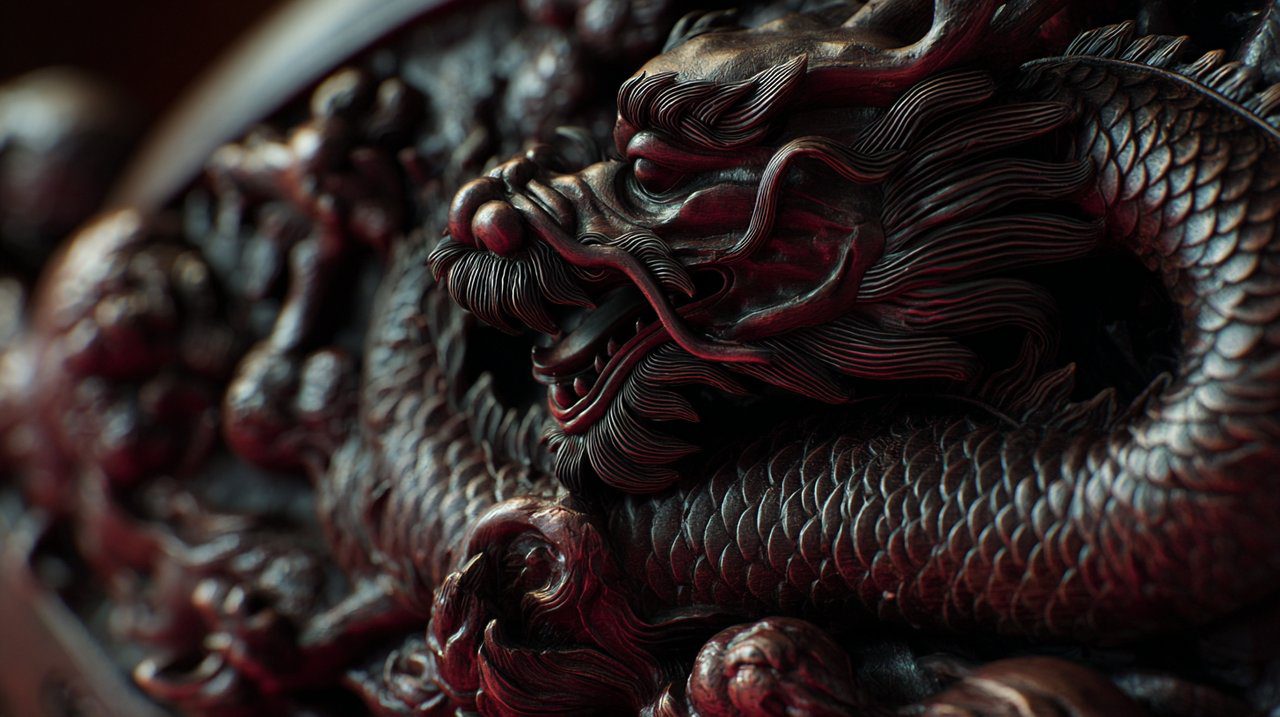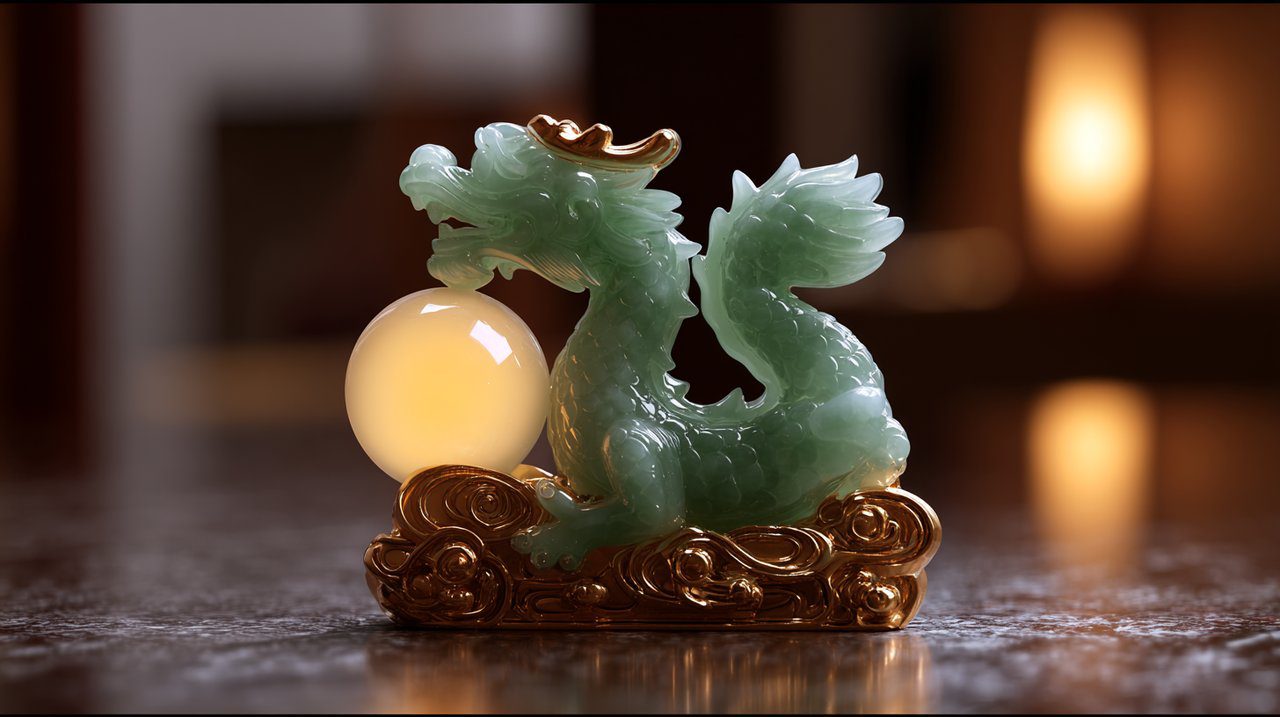The Enduring Symbolism of Dragon Claws on Chinese Furniture
When we encounter a piece of antique Chinese furniture, the powerful claws of the dragon often draw our gaze. Like the distinct patterns on a naturally formed stone, they are not just surface decorations. They whisper stories, inviting us to look beyond mere aesthetics to the deeper truths they hold.
The Dragon’s Grasp: Symbolism in Chinese Furniture
The dragon’s claws on Chinese furniture immediately convey strength and presence, akin to the rooted stability of an ancient tree. Their sculpted forms, poised with unseen energy, suggest a power held in quiet reserve. This repeated motif encourages us to pause, to consider the silent wisdom these old pieces carry.

These carvings connect the physical object to the vast reservoir of Chinese stories and timeless thought. They offer a tangible glimpse into a time when every detail held layered meaning. To truly observe them is to begin a silent conversation with a rich cultural past, understanding their enduring significance.
Layers of Meaning: Cultural and Imperial Significance
In Chinese culture, the dragon is revered as a creature of immense respect, embodying strength, benevolence, and deep wisdom. Its claws are therefore more than just anatomical features; they are potent symbols. When found on furniture, they reflect both societal order and a profound wish for protection and prosperity.
The Emperor’s Emblem: Claws of Power and Rank
Consider the quiet order found in a forest, where each tree finds its designated place. Similarly, in ancient imperial China, the number of claws on a dragon precisely marked one’s social standing. This detailed system ensured a clear understanding of hierarchy.
- The five-clawed dragon was exclusively reserved for the Emperor, symbolizing his ultimate authority and direct connection to the heavens.
- Princes and high-ranking nobles typically used the four-clawed dragon, known as the mang.
- For lower officials and common folk, the three-clawed dragon, or long, was the accepted norm.

Guardians of the Realm: Protection and Prosperity
Beyond the imperial court, the dragon was widely regarded as a benevolent and watchful spirit in Chinese folklore. It embodied strength, good fortune, and the power to gently guide away unwanted energies. When carved onto furniture, its presence was believed to extend this quiet protection to the home and its inhabitants.
Here, the dragon’s claws become like the strong roots of a family tree, holding firm to prosperity and peace. They are viewed as silent protectors, ensuring the well-being and long life of those within the home and their cherished belongings. This deep meaning connects to ancient spiritual practices that consistently sought balance and good fortune.
The Mystic Pearl and the Dragon: A Spiritual Pursuit
Often, the dragon is depicted reaching for, or gently holding, a glowing pearl. This image adds another quiet layer of understanding to the dragon’s claws, shifting their meaning from mere power to a pursuit of deeper wisdom. The pearl, in this symbolic dance, is central to the connection.
The Dragon with Ball: Wisdom and Cosmic Energy
The image of the Chinese dragon with ball is rich with subtle, hidden meanings. This mystic pearl represents wisdom, clear understanding, and the very seed of creation, much like the first dewdrop holding the potential for a new day. It might also embody the sun, the moon, or the delicate balance of yin and yang.
The dragon’s gentle pursuit or embrace of this pearl speaks of its journey towards truth and its harmonious connection with the forces of the cosmos. It tells a silent story of striving for inner completeness and deep knowing. The pearl can be seen as a concentrated form of life’s subtle energy.
Dragon Claws as Spiritual Anchors
When we observe the dragon’s claws gently holding the mystic pearl, they appear as anchors of spirit. They are not merely gripping an object, but guiding immense spiritual energy. This image suggests the dragon’s quiet ability to gather and direct cosmic forces for good.
Even when depicted alone, the claws themselves retain a strong connection to the unseen world. They speak of the dragon’s natural strength and its subtle way of shaping fate. It reminds us that the dragon serves as a bridge, joining the earth below with the sky above.

Echoes in Adornment: From Furniture to Meaningful Jewelry
The quiet wisdom of the dragon’s claws extends far beyond furniture, finding its way into many forms of Chinese art and adornment. We see familiar threads of protection, strength, and well-being woven into other cultural treasures, showing a consistent flow of meaning across different expressions.
For example, the Pixiu symbol, a mythical creature often shown with strong paws, shares the dragon’s purpose in drawing in abundance and gently warding off negativity. The dragon itself is a central figure in the Chinese Zodiac, representing strength, good fortune, and reaching one’s potential. The lasting fondness for dragon images in meaningful jewelry speaks to a human desire to carry these guarding and hopeful energies with us. Even the Koi Fish, known for its quiet strength against flowing waters, is often linked to the dragon’s journey and transformation, holding a similar spirit of quiet triumph.
The Enduring Legacy: Why Dragon Claws Still Captivate
The dragon claws we observe on Chinese furniture are much more than simple designs. They are quiet stories, held within a single form, speaking of strength, protection, wisdom, and a journey of the spirit. They gather together centuries of shared beliefs, imperial traditions, and deep philosophical thought. Their intricate shapes continue to touch something within us, a timeless human draw to strength and meaning.
These ancient symbols connect the echoes of the past with our present appreciation, gently inviting us to explore their rich layers of meaning. They stand as lasting reminders of a culture that breathed deep significance into everyday things. To observe such pieces is to feel a connection to a powerful and enduring heritage, reflecting a timeless quest for strength and resilience in the face of life’s currents.Symbols of Strength & Resilience: Decoding Ancient Wisdom for Enduring Spirit
The dragon’s claws on Chinese furniture are not just carvings; they are a quiet cultural statement, a guardian’s gentle embrace, and a soft whisper of the cosmos.
Next time you encounter a piece of Chinese furniture graced with dragon claws, consider it not merely as an object. See it as a living testament to a vibrant cultural and spiritual journey. Each claw, like a ripple in a still pond, tells a story, inviting us to look deeper into the quiet narratives held within symbolic art.
💡 Frequently Asked Questions
Dragon claws on Chinese furniture primarily symbolize strength, presence, and power, connecting the object to rich Chinese stories and cultural thought. They also reflect the order of society and a deep wish for protection.
In ancient imperial China, the number of claws on a dragon was a precise marker of one's standing. The five-clawed dragon was reserved solely for the Emperor, the four-clawed dragon (mang) for princes and high-ranking nobles, and the three-clawed dragon (long) was for lower officials and common folk.
The mystic pearl, often shown with a dragon, represents wisdom, understanding, the seed of creation, cosmic energy, and the balance of yin and yang. The dragon's pursuit or embrace of it signifies its journey towards truth and harmonious connection with the cosmos.
Beyond imperial rank, the dragon was widely seen as a kind and watchful spirit. Its presence on furniture was believed to extend quiet protection to the home, embodying strength, good fortune, and the power to gently guide away unwanted energies, ensuring the well-being and long life of those within.








